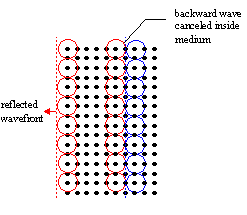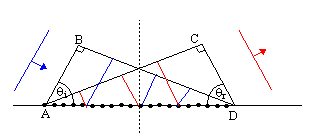Please wait while we process your payment
If you don't see it, please check your spam folder. Sometimes it can end up there.
If you don't see it, please check your spam folder. Sometimes it can end up there.
Please wait while we process your payment

By signing up you agree to our terms and privacy policy.
Don’t have an account? Subscribe now
Create Your Account
Sign up for your FREE 7-day trial
By signing up you agree to our terms and privacy policy.
Already have an account? Log in
Your Email
Choose Your Plan
Individual
Group Discount
Save over 50% with a SparkNotes PLUS Annual Plan!
 payment page
payment page
Purchasing SparkNotes PLUS for a group?
Get Annual Plans at a discount when you buy 2 or more!
Price
$24.99 $18.74 /subscription + tax
Subtotal $37.48 + tax
Save 25% on 2-49 accounts
Save 30% on 50-99 accounts
Want 100 or more? Contact us for a customized plan.
 payment page
payment page
Your Plan
Payment Details
Payment Summary
SparkNotes Plus
You'll be billed after your free trial ends.
7-Day Free Trial
Not Applicable
Renews July 20, 2025 July 13, 2025
Discounts (applied to next billing)
DUE NOW
US $0.00
SNPLUSROCKS20 | 20% Discount
This is not a valid promo code.
Discount Code (one code per order)
SparkNotes PLUS Annual Plan - Group Discount
Qty: 00
SparkNotes Plus subscription is $4.99/month or $24.99/year as selected above. The free trial period is the first 7 days of your subscription. TO CANCEL YOUR SUBSCRIPTION AND AVOID BEING CHARGED, YOU MUST CANCEL BEFORE THE END OF THE FREE TRIAL PERIOD. You may cancel your subscription on your Subscription and Billing page or contact Customer Support at custserv@bn.com. Your subscription will continue automatically once the free trial period is over. Free trial is available to new customers only.
Choose Your Plan
This site is protected by reCAPTCHA and the Google Privacy Policy and Terms of Service apply.
For the next 7 days, you'll have access to awesome PLUS stuff like AP English test prep, No Fear Shakespeare translations and audio, a note-taking tool, personalized dashboard, & much more!
You’ve successfully purchased a group discount. Your group members can use the joining link below to redeem their group membership. You'll also receive an email with the link.
Members will be prompted to log in or create an account to redeem their group membership.
Thanks for creating a SparkNotes account! Continue to start your free trial.
We're sorry, we could not create your account. SparkNotes PLUS is not available in your country. See what countries we’re in.
There was an error creating your account. Please check your payment details and try again.
Please wait while we process your payment

Your PLUS subscription has expired
Please wait while we process your payment
Please wait while we process your payment

Reflection
The first macroscopic manifestation of scattering we must examine is reflection. In the case
of a homogenous, isotropic, dense medium we know that a light wave would continue to propagate in the
forward direction. However, the argument we presented for this breaks down when there is a
discontinuity. In fact, at any interface between media such a discontinuity will cause some part of the wave
to propagate in the backwards direction -- this is called reflection. Referring to , which is a modification of , we can see that this must occur
because atoms at the very surface cannot 'pair off' with atoms λ/2 away in order to cancel out
radiation in the backwards direction, as all atoms deep in the medium can. When light is reflected while
moving from a less to a more optically dense medium (air to water, for example) it is called 'external
reflection.' Importantly, reflection occurs without color-bias; all wavelengths are reflected equally from a
dielectric surface.

Consider the diagram . The direction of the reflected wave is determined by the
phase difference between the scatterers on the surface. This, in turn, is caused by the angle made by the
incident wave and the surface (the angle of incidence, θi). If AB is an incoming wavefront and
CD is an outgoing wavefront such that the spherical wave emitted from A will be in-
phase with the wave just emitted from D (this is true is AB = CD).

 =
=  , where θr is the angle of the reflected wave. But clearly, BD = AC, so:
, where θr is the angle of the reflected wave. But clearly, BD = AC, so:
| sinθi = sinθrâá’θi = θr |
Reflection from a smooth surface (such as a mirror) is called specular reflection (any irregularities in the surface are small compared to λ). When the surface is rough in comparison to λ, diffuse reflection results.
Please wait while we process your payment

